First of all, what is a constellation?
Lets first take a look at what a constellation is, before diving into the Fornax constellation. A constellation is an area on the celestial sphere (an imaginary sphere) where a group of visible stars are located.
These stars typically form a pattern or outline, which we perceive to represent an inanimate object, (like a chemical furnace, an animal (like the scorpion), a mythical person (like Jason and the Argonauts, or even a type of creature (like Phoenix, or Cetus), from Greek mythology.
It is also an astronomy term used to describe a variety of groups of stars that have been given a specific name such as –
Constellations are constantly moving and move in the direction from East to West.
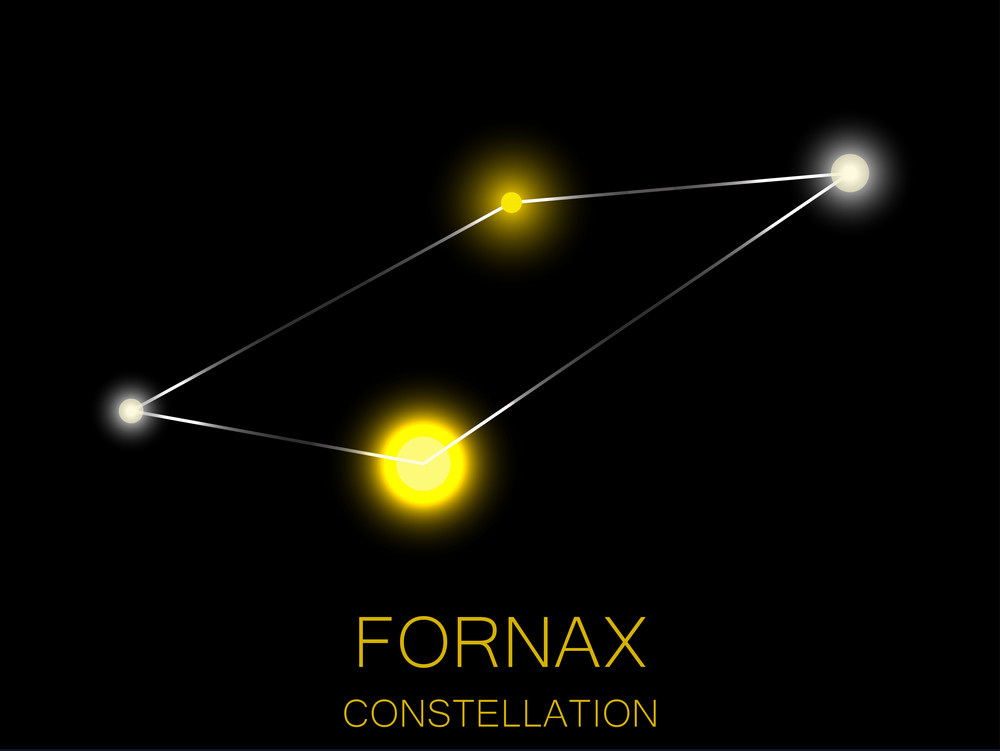
The Constellation Fornax – Facts in brief:
What is it? –
Fornax, the furnace Constellation, is regarded as a fairly small and faint constellation in the Southern Hemisphere. It is listed as the 41st largest Constellation as it fills around 1% of the night sky.
The Constellation of Fornax is associated with a large ‘v’ shape and the image of a chemical furnace.
The name ‘Fornax’ is Latin for the furnace and its Latin genitive ‘Fornacis’ is often abbreviated to ‘For’. Its V-shape illumination resembles the outline of the furnace, or a chemical furnace (Fornax Chemica).
Where is it located? –
The Fornax Constellation is positioned in the first quadrant of the Southern Hemisphere, south of the ecliptic (which is different from the celestial equator). Being located south of the celestial equator makes it more visible from the Southern Hemisphere.
It is sometimes referred to as being located in the SQ1 Quadrant.
FACT: The ecliptic is the imaginary line tracing the route that The Sun, the Moon, and the Planets take across the sky, over the year.
The plane of the Milky Way passes close the Constellation of Fornax.
The Constellation of Fornax is not considered to be a circumpolar constellation as it is not visible throughout the year in Southern latitudes.
It is best seen in the winter months, especially in December.
Circumpolar Constellations
There are 5 Constellations that are visible throughout the year, from most locations located north of the celestial equator, making them Circumpolar, they are:
- Cassiopeia Constellation
- Cepheus Constellation
- Draco Constellation
- Ursa Major Constellation
- Ursa Minor Constellation
FACT: A constellation that is visible all year round is known as a Circumpolar Constellation.
There are 3 Southern Constellations that are also circumpolar –
Where can it be seen?
Co-ordinates of a right ascension, or left ascension and their declination are used to locate all of the Constellations, like Fornax.
Fornax is most prominent in the Southern Hemisphere.The Constellation of Fornax lies at a 3 hours right ascension, and a declination of -30 degrees.
It’s more easily visible from the Southern Hemisphere at latitudes between +50 degrees and -9 degrees and covers an area of 398 square degrees in the Southern sky.
How was it formed, found and named?
The Constellation of Fornax is not one of the original 48 Constellations that were devised and later catalogued by the Greek astronomer Ptolemy.
It was in fact many years later that the French astronomer Nicolas Louis de Lacaille first introduced this constellation to the world in the 18th Century as part of his mapping of the Constellations, when working in the Cape of Good Hope, in South Africa.
He also charted a smaller world map, which included Fornax.
In 1603, the Constellation of Fornax was listed in ‘Uranometria’, the Star Atlas compiled by German astronomer Johann Bayer.
Fornax fills an area of 398 square degrees.
- Initially, the shapes of their star patterns informally categorized the Constellations in the sky.
- Eventually, the International Astronomical Union (IAU) published the official listing of constellation boundaries, mapping the constellations by their sky coordinates not by their line patterns and shapes.
Constellation Fornax is one of the 88 Constellations within the celestial sphere that is listed in the official IAU chart published by the International Astronomical Union (IAU).
How can you identify The Constellation of Fornax?
The simplest method for spotting any particular Constellation from Earth is to first of all locate the brightest star in that Constellation, and then look at the neighboring illuminations, or other neighboring well-known Constellations, to see if you can identify a recognizable pattern.
Meet The Neighbors
The Fornax Constellation is bordered by several other Constellations:
- Eridanus and Cetus – to the North
- Caelum, Horologium, Phoenix and Sculptor – to the South
It is most visible in the Southern Hemisphere in the evening around 21.00 hours, during the month of December.
The Constellation of Fornax is located close to the path of the Milky Way.
The Stars in Fornax
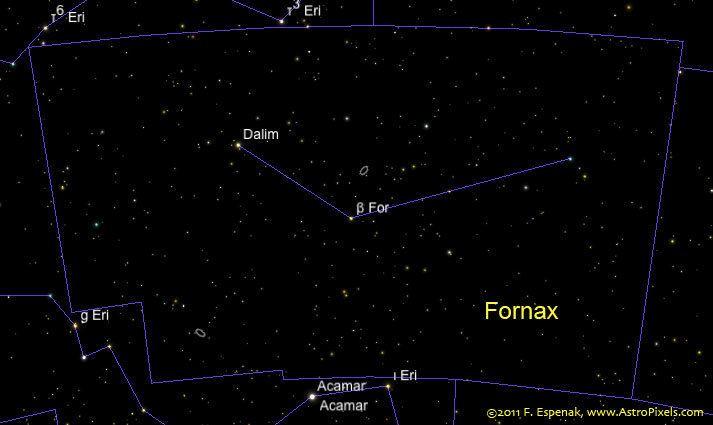
Fornax has 2 main Stars, although none of the Stars in this Constellation are particularly bright Stars.
The brightest Star starts with a fourth magnitude Star rating (meaning there are no Stars brighter than +3.0 apparent magnitude, located within this faint Constellation,
The brightest star ‘Dalim’, (alpha Fornacis), has a magnitude of 3.80
There are only 3 Stars that make up the triangular outline of the Fornax Constellation, with a total of 27 Stars that have been classified under the Johann Bayer Flamsteed system of naming Stars in the night sky.
The brightest Stars in any Constellation are listed and named in order of luminosity, using the Bayer designation system, from the brightest Star to the faintest Star.
A Bayer designation for a Star is where the ‘Alpha’ letter is normally allocated to the brightest star in front of its Latin genitive name (Fornacis), then ‘Beta’ and so on in decreasing order through the letters of the Greek alphabet (although not all the Greek letters are used in every constellation).
Quick Facts about Fornax:
- In the Constellation of Fornax the brightest Star is named Dalim (an Arabic name), Alpha Fornacis, and is located around 229 light years from the Sun. Dalim has an apparent visual magnitude of 3.8, and is visible by the naked eye
- The second brightest Star is called ‘Beta Fornacis’, with an apparent magnitude of 4.45 it is still visible by the naked eye
- The 3 bright Stars forming a ‘v’ shape are alpha For, beta For and Nu For
- The closest Star is HIP 14559 located around 48.89 light years from Earth
- The furthest Star is HIP 17712, and it’s located around 108721 light years from the Sun
- The average distance when considering the range of Stars in Fornax is around 196.72 light years distant
- The dimmest Star that can be seen by the naked eye is HD 16975 with an apparent magnitude of around +5.99
- There are 59 Stars in Fornax that are possibly visible by the naked eye in a clear dark night sky. Although none of these Southern Stars in Fornax have an apparent magnitude greater than a fourth magnitude classification. (Stars with a visual magnitude of up to +6.5)
- A total of 1096 Stars have been identified and scanned by the Hipparcos satellite but not all are visible by the naked eye.
FACT: it is assumed that the dimmest Star visibly the naked eye is one with a magnitude of +6.0 (although some references say the apparent magnitude for naked eye visibility of a Star is as much as +6.5)
The Shape
The Fornax Constellation can be identified in the night sky, as a long triangular (similar to the shape that represents the triangle shape of the Constellation of Triangulum).
The Southern stars of Fornax can be viewed from Earth, from a variety of locations, from a Southern location in the evening, by the naked eye.
The Star System within Fornax
There are 3 named Stars within Constellation Fornax that are approved by the IAU, each with an Arabic name: Dalim (alpha For), Diya, and Intan.
FACT: Star names come from many different cultures and their stories and beliefs. Many Star names date back to ancient times and are still used today. All of the official Star names have to be approved by the IAU, and most traditional Star names are in Arabic
The Constellation of Fornax has 2 main Stars and several others making up the imaginary outline of an illuminated furnace.
The notable stars forming the overall shape of Fornax are:
- Dalim, Alpha Fornacis (a For) – the brightest star in Fornax, and 46 light years distant
- Beta Fornacis (b For) – the second brightest in Fornax, and is an evolved G-type giant Star, 173 light years distant from the Sun
- Nu Fornacis, (v For) – a single variable Star, 370 light years distant from the Sun
- Omega Fornacis (w For) – a wide binary Star System, blue-white in hue and, 470 light years distant from the Sun (a fifth magnitude Star)
- Delta Fornacis – a solitary Blue-white Star, 790 light years from the Sun
Hipparcos created the apparent magnitude system to rank the brightness of Stars (for example he decided that that the grade of a first magnitude star should be twice as bright as a second magnitude Star, and so on).
FACT: The commonly quoted ‘Hipparcos Satellite’ is an abbreviation of ‘The High Precision Parallax Collecting Satellite’, which is an astrometric satellite used by the European Space Agency (ESA)
The Location of Fornax
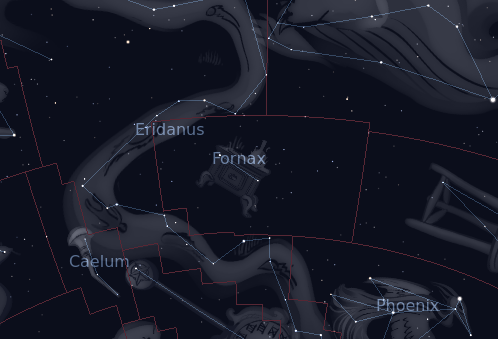
This Constellation can be spotted in the Southern Hemisphere, also referred to as the Southern celestial sky.
The Constellation Fornaxis surrounded by various recognizable Constellations namely Cetus, Eridanus, Phoenix and Sculptor.
The identifiable outlines of these Constellations are used as a guide-point in the sky used by astronomers and amateur stargazers to identify certain Deep Sky Objects of interest.
The naming of Fornax
Fornax is thought of as ‘the furnace’.
It was the French astronomerNicolas Louis de Lacaille from his observations of the night sky from the Cape of Good Hope in South Africa; Fornax was one of the Constellations he identified.
The 14 Constellations identified by Lacaille are known as ‘the Lacaille Constellations family’ and include (in alphabetical order):
- Antila;
- Caelum;
- Circinus;
- Horologium;
- Mensa;
- Microscopium;
- Norma;
- Octans;
- Pictor;
- Reticulum;
- Sculptor
- Telescopium
What’s within the Fornax Constellation?
The different components usually housed byConstellationsare mainly Stars, Deep Sky Objects and Messier objects (galaxies).
The Constellation of Fornax is formed by of a number of different components, it has:
- 2 main Stars
- 6 stars that host an exoplanet
- 3 named Stars
- 0 associated meteor showers
- 0 Messier Objects
What is a Bright Star?
The sky is home to various bright stars.
The brightness of a star is measured by a value called its magnitude (apparent magnitude) and they come in different sizes, composition, mass and color.
Their vast distance away from us is measured in light years from the Earth, the Sun or even the Milky Way. The lower the magnitude value the brighter the star appears in the night sky when viewed from Earth.
Locating its brightest Star, alpha Fornacis, can identify The Constellation of Fornax As well as Stars and Star Clusters, the Fornax Constellation also has deep sky objects and galaxies (or even globular clusters or open clusters).
Deep Sky Objects
The notable deep sky objects, includes objects from the Henry Draper Catalogue of Stars (abbreviated to HD and a designated number as an identifier)
FACT: A Deep Sky Object is an astronomical object, that is not a solar system object like the Sun, Moon, Comet or a Planet. An individual Star is not considered to be a Deep Sky Object.
Deep Sky Objects are faint objects that can still be observed by the naked eye in the night sky from Earth.
Deep Sky Objects include Galaxies, Star Clusters and Nebulae.
- Star clusters – such as Globular Clusters of Stars or Open Clusters of Stars
- Dark Nebula, Planetary Nebula, Diffuse Nebula, and Supernova remnants
- Galaxy Groups, Galaxies, Spiral Galaxies, Gravitational Lenses and Quasars
There are no named Messier objects, but there are Messier NGC catalogued objects present in Fornax.
This includes a cluster of 58 bright galaxies, known as the Fornax cluster. This is the second richest galaxy cluster, located within 100 million light years and is relatively small compared to other galaxies. It includes:
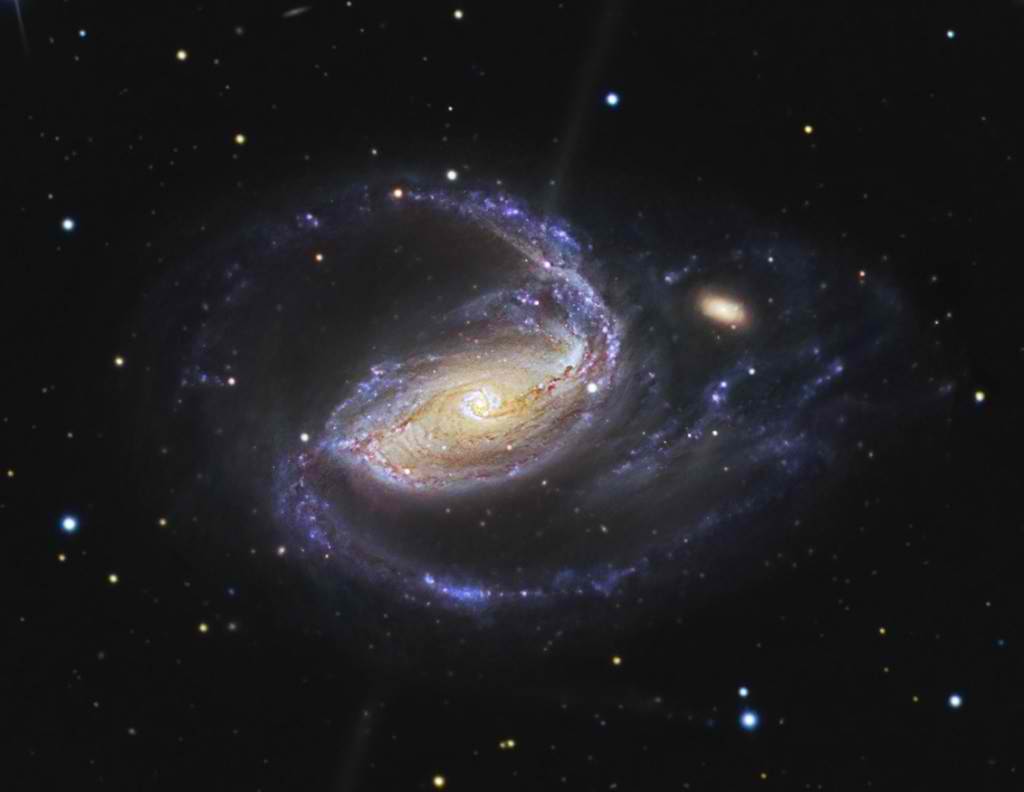
NGC 1097
- NGC 1097 (Caldwell 67) – is a barred spiral galaxy that’s also known as a Seyfert galaxy that has a nucleus and a supermassive black hole at its centre. It is located around 45 million light years distant with an apparent magnitude of 10.2 (but not visible by naked eye)
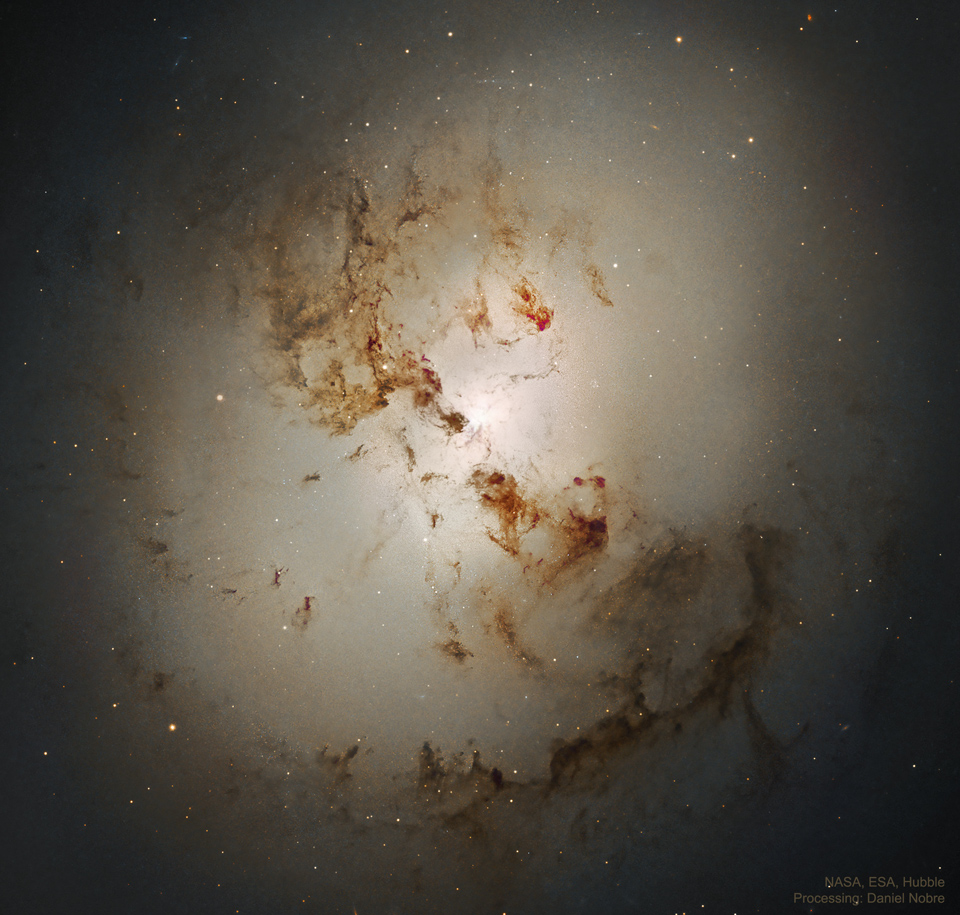
NGC 1316
- NGC 1316 – known as the Fornax Dwarf is a cluster of galaxies. It is the second richest galaxy cluster, after the larger Virgo Cluster
- The Fornax Dwarf is an elliptical dwarf, located around 460,000 light years distant with a visual magnitude of 9.3 (NGC 1316 is not visible by naked eye)

NGC 1365
- NGC 1365 – a Great Barred spiral galaxy. It has an apparent magnitude of 10.2.
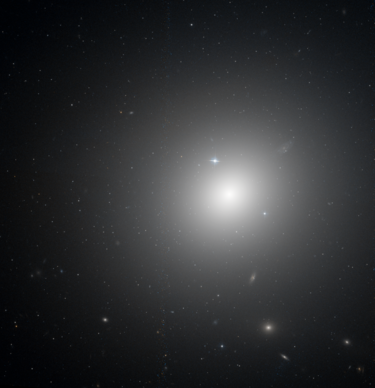
NGC 1399
- NGC 1399 is a large elliptical galaxy, with a visual magnitude of 9.99. It is located right in the center of this global cluster in Fornax and surrounded by several faint globular clusters
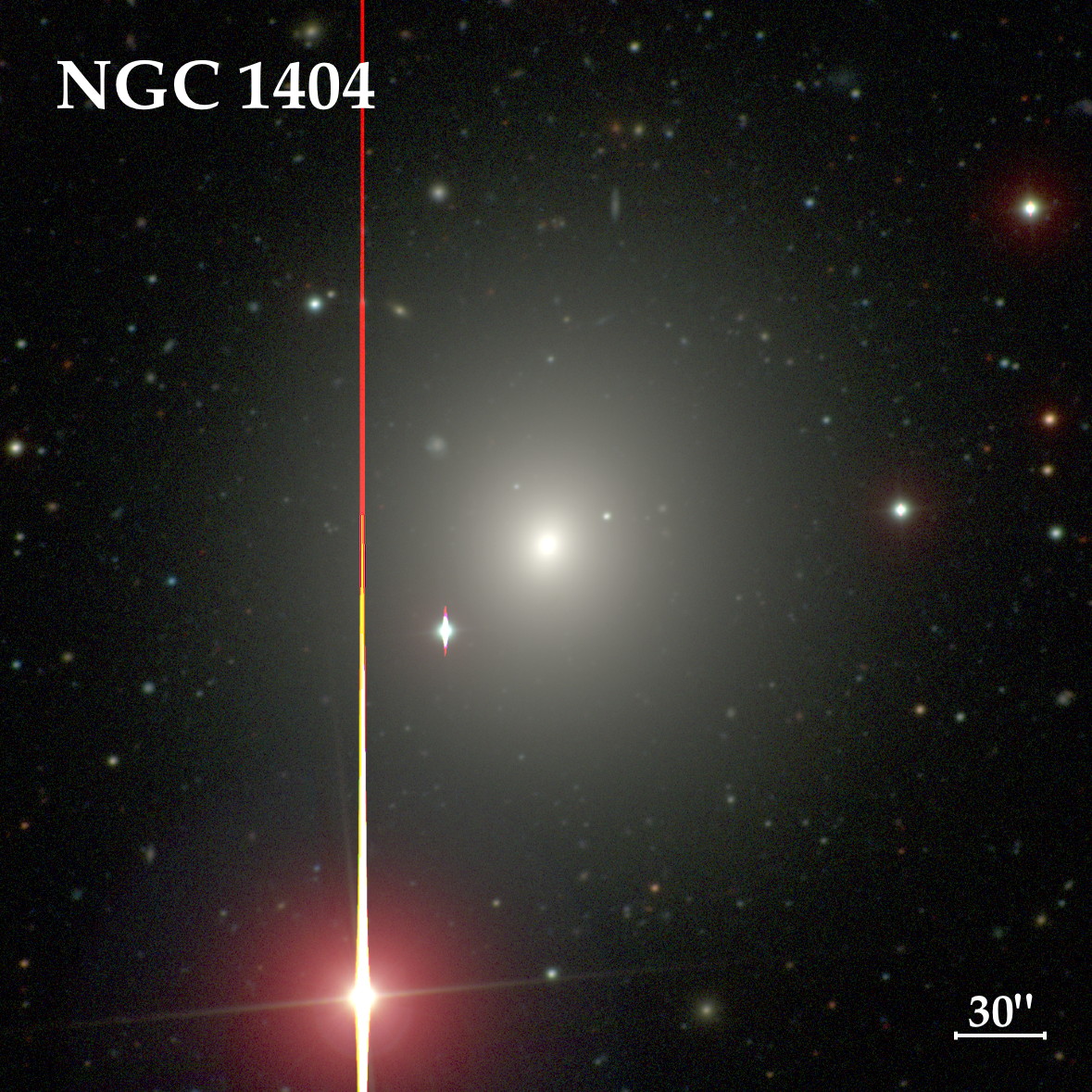
NGC 1404
- NGC 1404 is another elliptical galaxy in the Fornax cluster, with an apparent magnitude of 10.3 and located around 66 million light years from the Sun
- The second most distant object in the universe is located in the Constellation of Fornax. It isanother galaxy that’s around 13 billion light years from the Sun and is known as UDFy-38135539
What is a Nebula?
A Nebula is a massive cloud of gas and dust in Space.
Some Nebulae are formed when a star explodes and then dies, as is the case with a Supernova. Sometimes they can act as Star nurseries and are the areas where new Stars are forming.
The Nebulae are the spaces in between the stars referred to as interstellar space.
There are several types of Nebulae:
- Bright Nebulae,
- Emission Nebulae,
- Reflection Nebulae,
- Dark Nebulae
- Planetary Nebulae
FACT: a ‘reflection nebula’ is an interstellar cloud that should be a dark nebula (a molecular cloud) however its dust reflects light from a nearby bright star and it reflects the light, hence the name.
Images of the Nebulae have been captured using a professional large telescope, such as the NASA Spitzer Space Telescope, operated by NASA, and the famous Hubble Space Telescope.
Fornax is often abbreviated to ‘Forn’ from a naming convention used by NASA.
What is a Messier?
A Messier is a cluster of Stars It was Charles Messier, a French astronomer, whois credited with cataloging each of the Messier Star clusters, around 1764.
He is famous for publishing an astronomical catalogue that lists 110 nebulae and star clusters, known as the New General Catalogue (used in its abbreviated form NGC and numbered).
There are no Messier object star clusters within Constellation Fornax, but there are some NGC listed objects, like – NGC 1097 and NGC 1316 (a lenticular galaxy)
FACT: A star cluster is a large group of Stars that can be Globular Clusters or Open Clusters:
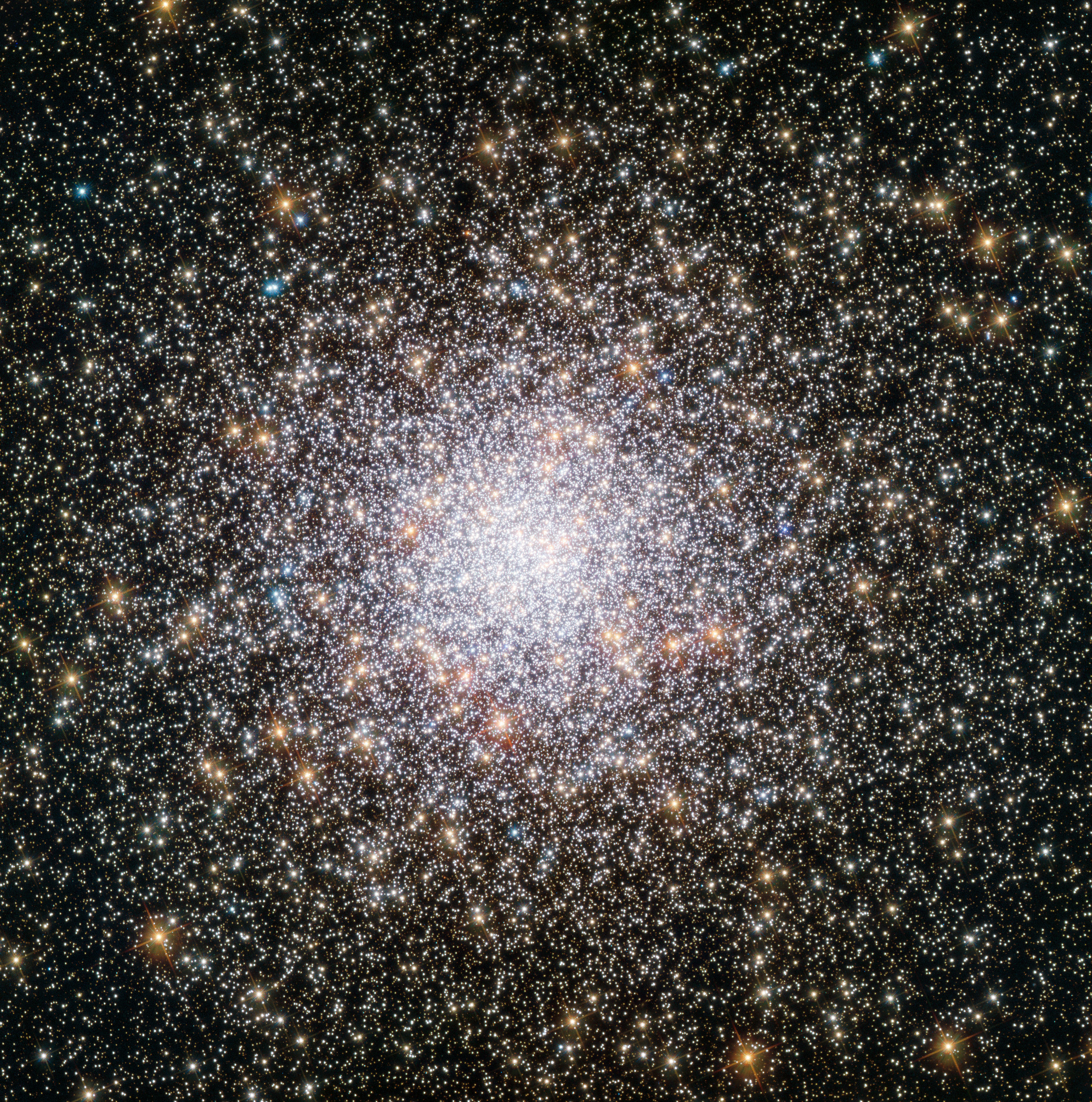
- Globular Clusters:
A global cluster is a spherical collection of ‘Old Stars,’ numbering hundreds to millions, that are tightly bound by gravity and orbits a galactic core.
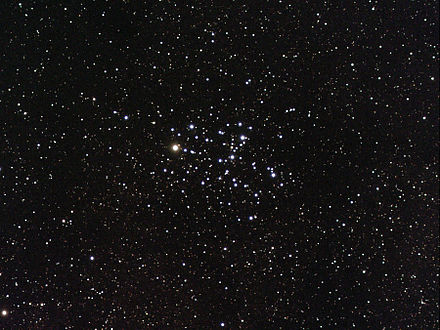
- Open Clusters:
An open cluster is a looser formation of ‘Young Stars’ that generally has less than a few hundred Stars.
Fornax can be split into two sub clusters
- NGC 1399
- NGC 1316, a lenticular galaxy that might merge into NGC 1399
The NGC 1316 is located in the far part of the Fornax cluster. It has giant radio lobes that could possibly mean it has an active giant nucleus, a Supermassive Black hole in its center.
This assumption is based on detailed scans from a very large telescope, such as the NASA/ESA Hubble Space telescope or the large telescope used by the European Southern Observatory.
Background & Facts:
The Greeks were the first ancient culture to name the modern Constellations in the sky.
However, in the case of the constellation of Fornax there were no associated Greek myths, nor did they mention the furnace used in chemical experiments in mythology.
Ptolemy

It was the well-known Greek Astronomer – Ptolemy, who first cataloged the 48 early constellations, in the 2nd Century (2 AD.), but he did not catalogue the Constellation of Fornax.
It was the French astronomer Nicolas Louis de Lacaille who first created Fornax and it still remains as one of the 88 modern Constellations defined by the IAU.
Bayer

In 1603, The German Astronomer – Johann Bayer, systematically assigned names to the brightest stars in each constellation and cataloged them in his Star atlas – ‘Uranometria Omnium Asterismorum’.
The Bayer designations are stellar designations where the stars within Constellations are initially identifiedby a name or a letter from the Greek Alphabet from Alpha through Omega (in order of brightness).
1. The names of the Stars begin with a letter of the Greekalphabet starting with– Alpha, then beta, gamma, etc.
2. Followed by the genitive form of their parent constellation’s Latin name – ‘Fornacis’
3. Giving the first Star name Alpha Fornacis
The mainstars of Fornax are named by their apparent magnitude (luminosity) from the brightest to faintest star in decreasing order, Stars with an apparent magnitude of less than +5.30 include:
1. Alpha Fornacis – an apparent visual magnitude of 3.85
2. Beta Fornacis – a variable visual magnitude of 4.45
3. Nu Fornacis – an apparent visual magnitude of 4.68
4. Omega Fornacis – an apparent visual magnitude of 4.96
5. Delta Fornacis – an apparent visual magnitude of 4.99
6. Phi Fornacis – an apparent visual magnitude of 5.13
7. Kappa Fornacis – an apparent visual magnitude of 5.19
8. u Fornacis – an apparent visual magnitude of 5.27
The importance of the Constellations such as Fornax dates way back to the times of the Babylonians who identified constellations with bright Stars
The Bright Stars of Fornax
If you look up and into the Southern night sky you can imagine the recognizable outline of the Constellation of Fornax, which is imagined as a furnace, in the shape of a triangle.
This main constellation is made up of 59 bright Stars.
Stars with Planets
Fornax has 6 Stars with an exoplanet orbiting around it in the solar system but they are unlikely to be able to support life forms.
The furthest exoplanet discovered was actually in the Andromeda Galaxy, not in the Milky Way.
Not all the stars within the Fornax Constellation are visible to the naked eye but with a large telescope and other modern imagery techniques is it possible to glimpse all of the stars.
FACT: An exoplanet (also referred to as an extrasolar Planet) is a planet that orbits a Star that is not located within our Solar System (exoplanets do not orbit our Sun)
Nothing stands still in the sky. Planets are continually being discovered and lists updated.
The Constellations change their positions throughout the year as the Earth rotates around the Sun. This means our position in space is forever changing and as a result our view of what’s in space changes too, and will continue to do so.
What is the purpose of Fornax –
In ancient times the dots, bright lights and perceived objects in the sky were of great interest and the makings of folklore to a great range of people from seamen to farmers.
From children to the elderly, we have had an ongoing fascination, with our solar system and star system. Perhaps it’s because the enormity and variety within it makes us realize just how large and exciting the universe is.
FACT: The Star System or Stellar System is a small number of stars that orbit around each other and are bound together by gravity.
When it becomes a large group of stars, again bound together in the same way, by gravity, it is known as a Galaxy or Star Cluster.
Whether they contain small groups of stars or larger groups of start the both come under the classification of ‘Star System’.
The Fornax celestial pole
The celestial pole defines the poles of the celestial equatorial coordinate system.
An object at the Celestial pole has a declination of 0 degrees.
- The declinations for the north celestial pole is +90 degrees
- The declinations for the south celestial pole is -90 degrees
The celestial poles are not permanently in a fixed position against the background of the stars as everything moves in Space.
Fornax is located in the Southern celestial sky at a +50 degree and -9 degrees declination, and an average 3-hours right ascension.
Navigational tools in the sky
The many Constellations in the night sky were a useful navigation tool and guide as well as the subject of legends and myths. 42 Constellations have been named after animals and 29 named after an object, such as an object used for chemical experiments.
There is usually a story behind each name from ancient myths to objects that have made a difference in the world, from microscopes to the chemical furnace.
Historical significance: surrounding Constellation of Fornax
Myths and Stories
The Constellation of Fornax is one of the 29 Constellations that are named after an object: the furnace.
Many ancient civilizations have related the Constellations in the sky to suit their beliefs and creations itself. They have been the subject of folklore and experiences for a very long time.
Fornax is not connected with any Greek or Roman myths or gods.
Ancient associations with the constellations
The Greeks, the Romans and the Sumerians all had an interest in the constellations in the sky.
The Sumerians were the first literate civilization of the Ancient Mesopotamia (an area occupying parts of Turkey and the Syria of today, Iraq, Iran)
The Sumerian civilization was not unified like the ancient Greek or Roman civilizations it was bonded by a common attitude.
Their belief systems featured many deities. They regarded their gods as being responsible for everything and as such held them in great respect. Many stories arose as a result.
For thousands of years, various cultures around the world have identified and named the constellation we know and see in the night sky as Fornax.
The Mesopotamian civilization (the first known civilization) identified constellations like Fornax.
FACT: The ancient lands of the Mesopotamians now stretches across Turkey, Syria, Iraq and Kuwait
Fornax and the other constellations in the sky had a practical use.
The ancient Mesopotamians and in Asia used the orientation of the constellations to set the seasons for sowing crops and harvesting.
The Babylonians also recorded details of various bright stars within the constellations in their Babylonian star catalogues before 100BCE.
What is the difference between a constellation and an asterism?
An asterism is a group of stars that appear to form a pattern in the night sky but with no officially determined boundaries. It can make up part of a constellation or cross the boundaries of an official constellation or even a defunct constellation. An asterism is a more vague assembly of stars than a recognized constellation.
The meteor showers of Fornax
There are no annual meteor showers associated with the Constellation of Fornax
Fun Facts about Constellations – Did you know that?
- The Constellation of Fornax is not one of the 12 constellations of the Zodiac, that appear when the Sun sets
- Constellations have been represented in many cultures as signs and navigational guides.
- The symbol of the triangle, formed by the position of notable stars, is associated with the Constellation of Fornax and also the Constellation of Triangulum.
- The rate of formation of stars in a starburst galaxy is more than 10 times faster than the star formation in the Milky Way galaxy
- The Constellation of Fornax was made famous by the well-known image captured by the Hubble Space Telescope. This image was one of the deepest views of the 1000’s of different galaxies in the universe.
- As the Fornax Constellation is made up of Stars that are in many different locations and vast distances from each other it is now possible to go to just one location to view it. It is visible from many different locations.
- The average distance to the main Stars in the small Southern Constellation Fornax is around 264 light years away.
- Charles Messier the French Astronomer who cataloged the Messier objects has a crater on the Moon named after him.
- Constellations like Formax are not part of our Solar System; they are groups of stars that appear to form shapes that are visible with the naked eye from Earth.
- The largest Constellation is called Hydra and the smallest Constellation is called Crux
- A Constellation does not actually exist as a fixed object, it is a group of bright stars that happen to be in a random place and are light years apart and ever moving. We see the pattern of their presence.
- The center of a Galaxy does not contain a Giant Star it contains a Supermassive Black Hole.
Commonly Asked Questions
Q. What is the celestial sphere?
A. In astronomy and navigation terms, the celestial sphere is imaginary.
This virtual sphere has a large radius that is concentric with Earth.
We can imagine all objects in the night sky as being projected upon the inside of this celestial sphere, as if it has images placed inside a dome.
Q. What’s the difference between a Constellation and an asterism?
A. The stars that make up a Constellation have a definite position and form, whereas an asterism is a collection of stars without a fixed position
Q. What prevents us seeing the Stars and Constellations in the night sky?
A. Light pollution, fog, city lights and artificial lights all limit our visibility of the objects in the sky at night.
Q. Will the Constellations change over time?
A. The Constellations are continually on the move.
The images we form in our imagination to make objects, shapes and patterns out of the constellations have already shifted over time.
As we view the night skies from Earth they are likely to continue to shift and possibly in time the images may look very different.
Sources:
- https://www.vectorstock.com/royalty-free-vector/fornax-constellation-bright-yellow-stars-in-the-vector-33250824
- https://in-the-sky.org/data/constellation.php?id=38
- https://alchetron.com/Fornax
- http://annesastronomynews.com/photo-gallery-ii/galaxies-clusters/ngc-1097-by-r-jay-gabany
- https://apod.nasa.gov/apod/ap210126.html
- https://en.wikipedia.org/wiki/NGC_1365
- https://en.wikipedia.org/wiki/NGC_1399
- https://cgs.obs.carnegiescience.edu/CGS/object_html_pages/NGC1404.html
- https://astronomynow.com/2016/10/24/hubble-reveals-ngc-362-a-young-globular-cluster
- https://www.wikiwand.com/en/List_of_open_clusters
- http://www.hellenicaworld.com/Greece/Science/en/PtolemyAstronomy.html
- https://alchetron.com/Johann-Bayer